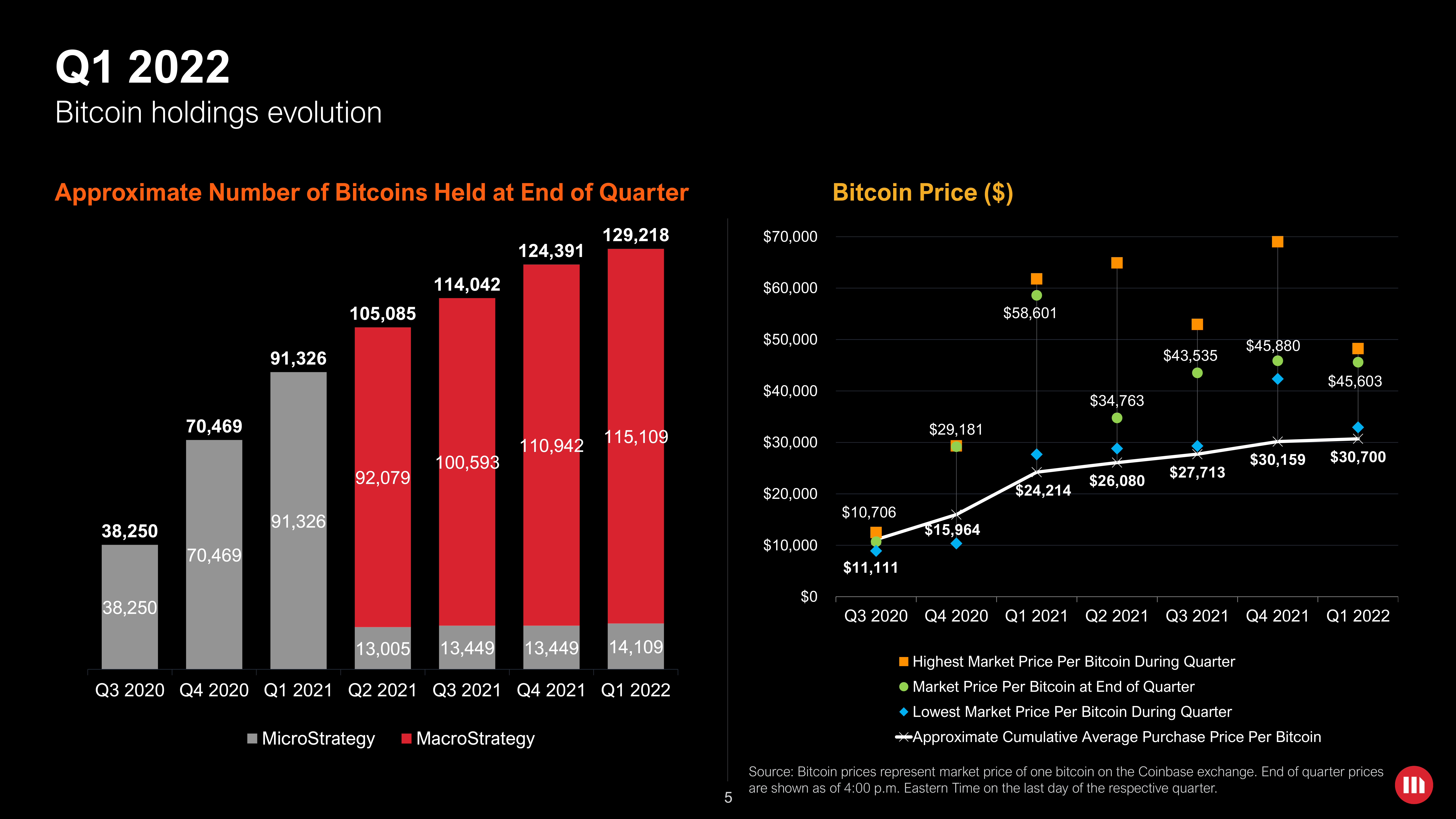
5 Critical Bitcoin Future Expiration Dates That Will Shock Traders
The Bitcoin futures expiration landscape has evolved into a sophisticated battleground where $2.8-4.1 billion in contract value converges on specific timeframes, triggering 30-50% volatility spikes that can make or break trading careers in a matter of hours. As we navigate through 2025, understanding these critical expiration dates has become the difference between consistent profitability and devastating losses for both institutional and retail traders in the cryptocurrency derivatives market.
The Bitcoin expiration effect phenomenon has intensified dramatically with increased institutional adoption and the proliferation of complex derivatives strategies. Research indicates that traders should focus on the days around expiration (Thursday and the weekend afterward + Monday) while avoiding the expiration day itself, revealing patterns that mirror traditional financial markets but with amplified intensity unique to the crypto ecosystem.
What makes these Bitcoin futures expiry dates particularly shocking is their ability to create cascading liquidation events that ripple across the entire digital asset landscape. Unlike traditional markets where expiration effects are somewhat predictable, the 24/7 Bitcoin market creates unique dynamics where Asian trading sessions, algorithmic strategies, and cross-exchange arbitrage can amplify volatility patterns beyond historical precedents.
The convergence of multiple expiration types—ranging from monthly CME settlements to quarterly institutional rebalancing—creates perfect storm conditions that experienced traders have learned to anticipate and exploit. Professional traders employ three primary strategies: offsetting positions, holding to expiration, and rolling contracts, each requiring precise timing and sophisticated risk management to execute successfully during these high-stakes periods.
Understanding the psychological and mechanical forces behind these Bitcoin futures expiration dates is no longer optional for serious market participants. The intersection of options gamma effects, institutional flow, technical analysis, and market microstructure creates opportunities for those prepared to navigate the chaos, while potentially devastating unprepared traders caught in the crossfire of expiry-driven volatility.
The Science Behind Bitcoin Expiration Volatility
Market Microstructure and Expiration Mechanics
The Bitcoin futures market operates on fundamentally different principles than traditional financial markets, creating unique expiration dynamics that can shock even experienced derivatives traders. The 24/7 nature of cryptocurrency trading means that expiration effects don’t follow conventional patterns, with crypto futures bringing unique challenges as they trade continuously with no market closures, creating unprecedented volatility amplification during critical settlement periods.
Market makers and institutional algorithms play increasingly sophisticated roles in Bitcoin expiration events, with high-frequency trading systems designed to capitalize on micro-inefficiencies that emerge as contracts approach their settlement dates. The order book dynamics during these periods reveal telling patterns: bid-ask spreads widen dramatically, market depth decreases substantially, and price discovery becomes increasingly chaotic as automated systems compete for optimal execution prices.
The settlement mechanism itself creates multiple layers of complexity unique to Bitcoin derivatives. Unlike equity markets where physical delivery is straightforward, Bitcoin settlement requires complex custody arrangements, blockchain confirmations, and exchange-specific protocols that can create operational bottlenecks during high-volume expiration periods. These technical constraints often manifest as price premiums or discounts that sophisticated traders learn to anticipate and exploit.
Psychological Factors Driving Expiration Behavior
Trader psychology around Bitcoin expiration dates exhibits distinct behavioral patterns that amplify market volatility beyond what fundamental analysis would predict. The fear of missing out (FOMO) intensifies as expiration deadlines approach, driving both retail and institutional traders to make increasingly aggressive positioning decisions that can trigger cascading market movements.
Loss aversion becomes particularly pronounced during Bitcoin expiration periods, with traders often holding losing positions too long in hopes of last-minute reversals, only to face forced liquidations as margin requirements tighten. Conversely, profit-taking behavior accelerates dramatically in the hours leading up to expiration, creating sudden sell pressure that can overwhelm market liquidity and trigger sharp price corrections.
The herding mentality effect is amplified in cryptocurrency markets due to the relatively concentrated nature of institutional holdings and the influence of social media sentiment. When major Bitcoin holders or influential market commentators signal their expiration strategies, it often triggers copycat behavior that can push price movements far beyond levels justified by underlying supply and demand fundamentals.
The 5 Shocking Bitcoin Expiration Dates Revealed

1. The Final Friday Phenomenon: Monthly CME Settlements
The monthly CME Bitcoin futures expiration occurring on the last Friday of each month represents the most consistently shocking volatility event in the cryptocurrency calendar. CME Group provides official Bitcoin futures calendar information, but the real impact extends far beyond the simple scheduling data, creating market dynamics that can generate intraday price swings exceeding 8-12% within mere hours.
Historical analysis reveals that the final Friday effect begins manifesting as early as the preceding Tuesday, with options positioning, futures rolling, and institutional rebalancing creating layers of trading pressure that build throughout the week. The 48-hour period leading up to CME expiration consistently shows volume increases of 150-200% above normal levels, accompanied by volatility spikes that can challenge even the most sophisticated risk management systems.
What makes monthly CME expirations particularly shocking is their interaction with global trading sessions. As European markets close and Asian sessions begin during CME settlement, the resulting liquidity gaps can create flash crashes or rapid rallies that catch algorithmic trading systems off-guard. Professional traders have learned to reduce position sizes by 30-50% during these periods to avoid catastrophic losses from unexpected gap openings.
The institutional order flow around CME monthly expirations provides valuable signals for market direction. Large fund managers often use these dates for portfolio rebalancing, creating buying or selling pressure that can persist for several days after the actual expiration event. Understanding these flow patterns allows savvy traders to position for post-expiration opportunities when artificial market pressures dissipate.
2. Quarterly Avalanche: The Season-End Shock Events
Quarterly Bitcoin futures expiration dates in March, June, September, and December create the most explosive volatility events in the cryptocurrency calendar, often generating price movements that can exceed 15-20% within a single trading session. These quarter-end settlements coincide with institutional reporting periods, fiscal year-end adjustments, and regulatory compliance deadlines that amplify normal expiration effects into market-moving avalanches.
The quarterly avalanche effect is particularly pronounced because it combines multiple expiration cycles simultaneously. Monthly futures, quarterly options, institutional rebalancing, and tax-related trading converge to create perfect storm conditions that can overwhelm even the deepest liquidity pools. Recent analysis shows massive $14.6B BTC and ETH options expiry demonstrating persistent demand for downside protection, illustrating the scale of institutional positioning around these critical dates.
December quarterly expirations deserve special attention as they coincide with year-end tax harvesting, holiday trading volumes, and annual portfolio adjustments by institutional investors. The combination of reduced market participation due to holidays and increased rebalancing activity creates conditions where relatively small trading flows can generate disproportionately large price impacts, making December quarterly settlements among the most unpredictable Bitcoin market events.
Smart traders prepare for quarterly avalanches weeks in advance, implementing volatility-based strategies, protective hedging, and reduced leverage to navigate the chaos. The post-quarterly period often presents exceptional opportunities as market dynamics normalize and new trend patterns begin establishing themselves based on fundamental factors rather than expiration-driven technicals.
3. The Options Gamma Bomb: Weekly Expiration Chaos
Bitcoin options expiration events, particularly the weekly Friday settlements, create what professional traders call gamma bombs—sudden volatility explosions triggered by market maker hedging activities that can generate intraday price swings exceeding 5-8% without warning. Bitcoin options expiry often triggers increased trading activity, leading to significant market volatility and potential price fluctuations, but the mechanics behind these movements are far more complex than most traders realize.
Gamma hedging by options market makers creates feedback loops that can amplify price movements dramatically as expiration approaches. When Bitcoin’s price moves toward heavily traded strike prices, market makers must rapidly adjust their underlying positions to maintain risk neutrality, creating sudden buying or selling pressure that can trigger cascade effects through stop-loss orders and algorithmic trading systems.
The pin risk phenomenon around major options strikes creates magnetic effects where Bitcoin’s price gravitates toward levels with the highest open interest. This gravitational pull becomes increasingly powerful in the final hours before options expiration, sometimes overriding technical analysis and fundamental factors as derivative forces temporarily dominate price discovery mechanisms.
Weekly options expirations have become increasingly important as retail trader participation in Bitcoin options has exploded. The democratization of options trading through user-friendly platforms has created new flow patterns that can surprise even sophisticated institutional traders accustomed to more predictable quarterly expiration cycles.
4. The Perpetual Contract Reset: Funding Rate Explosions
Perpetual futures contracts, while technically not having expiration dates, create their own version of settlement shock through funding rate resets that occur every 8 hours across major exchanges. These funding events can trigger position liquidations, strategy adjustments, and cross-exchange arbitrage activities that generate volatility spikes comparable to traditional expiration effects.
The funding rate mechanism serves as a continuous expiration system that keeps perpetual contract prices aligned with spot Bitcoin prices. When funding rates reach extreme levels—often exceeding 0.5% per 8-hour period during high-volatility events—it creates economic incentives for massive position adjustments that can trigger market-wide volatility.
Funding rate explosions typically occur when long or short positions become extremely concentrated, forcing one side to pay increasingly expensive funding costs to maintain their positions. This creates natural exit pressure that builds over successive funding periods until it reaches a tipping point where mass liquidations or position closures trigger dramatic price reversals.
Professional traders monitor funding rate trends across multiple exchanges to anticipate these perpetual contract resets. When funding rates show divergence between exchanges or reach historically extreme levels, it often signals impending volatility events that can be as shocking and profitable as traditional expiration-driven market movements.
5. The Institutional Rebalancing Storm: Month-End Mayhem
End-of-month institutional rebalancing represents perhaps the most underestimated source of Bitcoin volatility, creating market storms that can generate price swings exceeding 10-15% as fund managers adjust their cryptocurrency allocations based on performance metrics, risk parameters, and compliance requirements. Proactive monitoring of market conditions and decision-making about contract rollovers becomes crucial as expiry dates approach, but the scale of institutional rebalancing often overwhelms individual risk management strategies.
Portfolio rebalancing algorithms used by quantitative funds and institutional asset managers often execute large-scale trades simultaneously around month-end periods, creating concentrated selling or buying pressure that can exhaust order book liquidity on multiple exchanges. These algorithmic rebalancing events can trigger cascade effects where initial price movements activate stop-loss orders, margin calls, and liquidation mechanisms that amplify the original market impact.
Risk parity strategies and volatility targeting funds create additional rebalancing pressure during month-end periods. As Bitcoin’s realized volatility changes throughout the month, these strategies automatically adjust their position sizes to maintain target risk levels, often resulting in procyclical trading that amplifies market trends during volatile periods.
The regulatory reporting requirements for institutional Bitcoin holders add another layer of complexity to month-end rebalancing. Compliance deadlines for quarterly filings, risk reporting, and regulatory capital calculations can force institutional traders to make position adjustments regardless of market conditions, creating non-economic trading flows that can shock unprepared market participants.
Advanced Trading Strategies for Expiration Events
Pre-Expiration Positioning and Preparation Tactics
Successful navigation of Bitcoin expiration events requires sophisticated pre-positioning strategies that begin 7-10 days before critical settlement dates. Professional traders implement volatility-based position sizing, typically reducing their leverage ratios by 40-60% during pre-expiration periods to ensure they can withstand unexpected price shocks without facing margin calls or forced liquidations.
Options strategies become particularly valuable during pre-expiration periods, with protective puts, collar structures, and volatility spreads providing downside protection while maintaining upside participation. Rolling over strategies involve closing expiring contracts and opening new ones with later expiration dates, but timing these rollover decisions requires precise understanding of market microstructure and institutional flow patterns.
Cross-exchange positioning strategies allow sophisticated traders to capitalize on expiration-driven price discrepancies between different trading venues. As settlement mechanisms vary between exchanges, arbitrage opportunities often emerge during high-volatility expiration periods that can generate risk-free profits for traders with sufficient capital and technical infrastructure.
Correlation hedging using related cryptocurrency derivatives or traditional financial instruments can provide portfolio protection during expiration events. Understanding how Bitcoin correlates with other assets during high-stress periods allows traders to construct hedge ratios that can offset some volatility risk while maintaining core position exposure.
Real-Time Expiration Event Management
Dynamic hedging during active expiration events requires real-time monitoring of options gamma, futures basis, funding rates, and cross-exchange spreads to identify emerging volatility opportunities or risk concentrations. Professional trading systems often employ algorithmic risk management that automatically adjusts position sizes, stop-loss levels, and hedging ratios based on real-time volatility calculations.
Liquidity management becomes critical during high-volatility expiration periods when normal market depth can evaporate rapidly. Experienced traders often split large orders into smaller time-weighted executions and utilize dark pools or over-the-counter markets to avoid market impact from their position adjustments.
Volatility trading during expiration events can be highly profitable but requires precise timing and sophisticated risk controls. Delta-neutral strategies, gamma scalping, and volatility arbitrage can potentially profit from elevated implied volatility while limiting directional risk, but these strategies require continuous monitoring and rapid execution capabilities.
Risk Management During Critical Periods
Advanced Position Sizing Methodologies
Risk management during Bitcoin expiration periods demands fundamentally different approaches than normal cryptocurrency trading. The Kelly Criterion and fixed fractional position sizing methods become inadequate during high-volatility periods, requiring dynamic position scaling based on real-time volatility estimates and correlation adjustments.
Volatility-adjusted position sizing involves scaling position sizes inversely to expected volatility levels, ensuring that dollar risk remains constant even as price volatility increases dramatically. Professional traders often implement position size reductions of 50-75% during major expiration events to maintain consistent risk exposure despite amplified market conditions.
Correlation-based risk management becomes particularly important during expiration periods when normal diversification assumptions break down. As market stress increases, correlations between different cryptocurrency assets often approach 1.0, requiring position adjustments to maintain true portfolio diversification.
Emergency Response Protocols
Contingency planning for extreme expiration events requires pre-defined protocols for market disruptions, exchange outages, liquidity crises, and flash crashes. Professional traders maintain emergency contact lists, backup trading platforms, and pre-approved hedge transactions that can be executed rapidly during market emergencies.
Liquidation waterfall procedures help traders maintain orderly position closure during extreme market conditions. These protocols specify priority orders for position liquidation, collateral management, and cross-exchange transfers to minimize slippage and counterparty risk during high-stress periods.
Communication strategies during active expiration events ensure that trading teams remain coordinated and informed about market developments, position changes, and risk exposures as market conditions evolve rapidly throughout expiration periods.
Market Analysis and Historical Performance Data

Statistical Patterns and Behavioral Analytics
Quantitative analysis of Bitcoin expiration events over the past five years reveals consistent statistical patterns that provide valuable insights for trading strategy development. Bitcoin has been three to nearly four times as volatile as various equity indices from 2020 to 2024, but expiration periods show volatility amplification that exceeds these already elevated baseline levels by additional factors of 2-3x.
Return distribution analysis during expiration periods shows significant positive skewness and excess kurtosis, indicating that extreme price movements occur far more frequently than normal distribution models would predict. This statistical evidence supports options-based hedging strategies and fat-tail risk management approaches during critical expiration dates.
Volume-price relationship studies reveal that Bitcoin expiration events consistently generate volume spikes that precede major price movements by 4-8 hours, providing early warning signals for prepared traders. The volume-weighted average price (VWAP) during expiration periods often deviates significantly from closing prices, creating arbitrage opportunities for sophisticated execution strategies.
Cross-Market Impact Analysis
Spillover effects from Bitcoin expiration events extend far beyond the cryptocurrency ecosystem, influencing traditional financial markets, commodity prices, and currency exchange rates through correlation channels and risk-on/risk-off sentiment shifts. Understanding these cross-market dynamics allows traders to identify secondary opportunities and portfolio diversification strategies.
Regional market variations show that Bitcoin expiration effects manifest differently across geographic regions due to regulatory differences, trading hour overlaps, and institutional participation patterns. Asian markets often show amplified volatility during U.S. expiration events due to timezone arbitrage and liquidity concentration factors.
Sector rotation patterns during major expiration events reveal capital flow dynamics between Bitcoin, altcoins, DeFi tokens, and traditional assets that create systematic trading opportunities for multi-asset strategies. These patterns often persist for several days after expiration events, creating momentum opportunities for trend-following strategies.
Future Evolution and Market Structure Changes
Technological Disruption and Trading Infrastructure
Algorithmic trading sophistication continues to evolve rapidly around Bitcoin expiration events, with machine learning systems and artificial intelligence playing increasingly important roles in pattern recognition, risk management, and execution optimization. These technological advances are making expiration effects more efficient but also more competitive, requiring continuous adaptation by human traders.
Decentralized finance (DeFi) protocols are beginning to offer alternative settlement mechanisms and derivatives structures that could fundamentally alter traditional expiration dynamics. Automated market makers (AMMs), decentralized options protocols, and cross-chain derivatives represent emerging market infrastructure that may distribute expiration effects across broader timeframes and multiple blockchain networks.
Real-time risk analytics and portfolio optimization tools are becoming more sophisticated, allowing individual traders to implement institutional-grade risk management strategies that were previously unavailable to retail participants. This democratization of advanced trading tools is leveling the playing field and potentially reducing extreme volatility around expiration events.
Regulatory Development and Market Maturation
Regulatory clarity around Bitcoin derivatives continues to evolve, with new compliance requirements, position reporting standards, and market surveillance systems potentially affecting institutional participation in expiration events. Clearer regulatory frameworks generally increase institutional adoption while potentially reducing extreme volatility through improved risk management standards.
Central bank digital currencies (CBDCs) and regulatory stablecoins may provide alternative settlement mechanisms that could reduce settlement risk and operational complexity around Bitcoin expiration events. These developments could make expiration periods more predictable while maintaining profitability for sophisticated traders.
Market structure evolution driven by institutional adoption is gradually reducing information asymmetries and improving price discovery around expiration events. However, this maturation process is also creating new complexities as different types of institutions with varying risk appetites and investment horizons interact in increasingly sophisticated ways.
Also Read: Bitcoin Futures Expiration Dates Calendar 2025 Complete Trading Guide
Conclusion
Bitcoin futures expiration dates represent the most critical inflection points in the cryptocurrency trading calendar, with the five shock events outlined—monthly CME settlements, quarterly avalanches, options gamma bombs, perpetual funding resets, and institutional rebalancing storms—creating systematic opportunities for prepared traders while devastating the unprepared.
The convergence of technological sophistication, institutional adoption, and regulatory evolution is transforming these expiration events into increasingly complex phenomena that require deep market understanding, sophisticated risk management, and continuous adaptation to navigate successfully. As Bitcoin derivatives markets continue to mature and expand, the importance of expiration date awareness will only intensify, making mastery of these critical periods essential for long-term trading success.
The traders who invest time in understanding expiration mechanics, developing appropriate strategies, and maintaining disciplined risk management will find themselves positioned to capitalize on some of the most explosive profit opportunities in the entire financial markets landscape.







